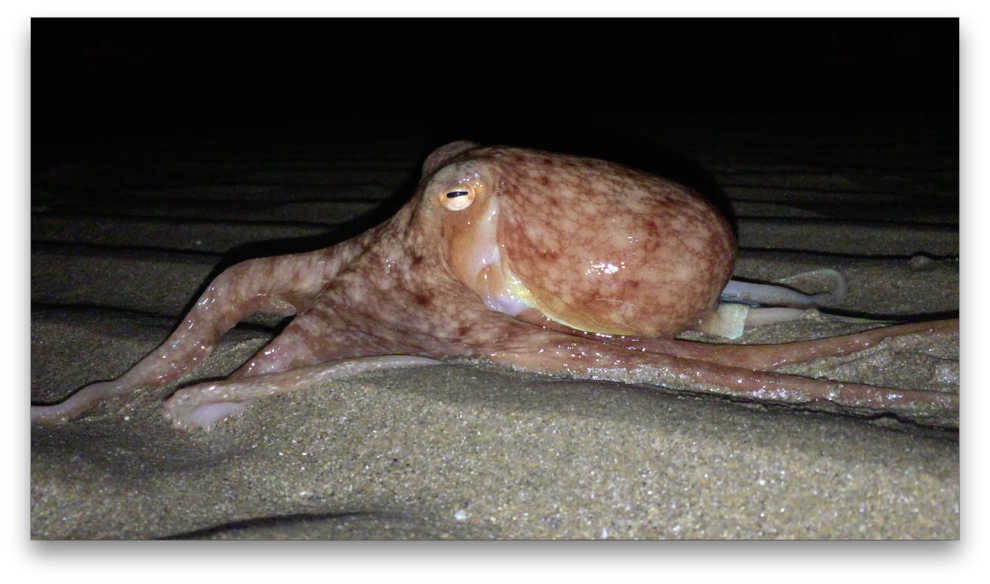A GROUP of octopuses beached themselves at New Quay over the weekend, with a large number subsequently dying in spite of the best efforts of locals to save them.
One person alone saw over 20 curled octopuses, which cannot survive out of water for more than a few minutes, walking up the beach.
The proprietor of SeaMor Dolphin Watching Trips Brett Stones first noticed the creatures last Friday night (Oct 27) after returning to harbour.
“We moored the boat up, and as we were coming back across the beach we saw the first one,” he told The Herald.
“We didn’t think we would see any more, so we made a bit of a fuss over it. Instinct kicked in, it was a vulnerable animal out of its environment.
“We checked it over, and there weren’t any obvious injuries or illness, so we dropped it back in the water off the end of the pier.
However, walking along the beach, Brett and his crew came across between 20 and 25 more octopuses. “We put them back into deeper water, and hopefully that helped. “Was it the right thing to do? I’m not sure, but it was instinctive,” he added.
Video footage taken by Brett has gone viral, with news outlets including the Washington Post phoning him for information.
“It’s been strange – I’ve had papers from all over Britain and America phoning me. I’ve even missed a few people phoning to make charter bookings because I’ve been on the phone to LadBible or the Washington Post,” he remarked.
“It’s been a good day for dolphin-watching too!”
The population of curled octopuses has increased in Welsh waters, largely as a result of declining cod stocks. The creatures, which live for up to three years, are happy in water varying from 100m to the shallows, and they generally feed on molluscs and crustaceans, even raiding crab and lobster pots for the bait and catch. Their main predators include dolphins.
While there have been occasional sightings of the species on beaches in the east of England, it is thought that the number coming ashore in Newquay is unprecedented. A number of theories have been put forward, from microplastics, acidity in the sea, and military sonar, but Brett believes the answer could be a lot simpler.
“I think it’s something to do with the spawning season,” he explained, “a lot of them die at this time of year.
“Alternatively, the coast received a battering from Storm Ophelia and Brian. And they could have become disorientated and walked towards the bright lights of New Quay when the water cleared.”
This theory was supported by James Wright, curator at the National Maritime Museum in Plymouth.Speaking to the national media, he said: “There’s been a few online videos showing them coming out under the cover of darkness to hunt but to have them crawl out in the number that was seen on that particular night is quite unusual.
“They’re crawling across the beach and not looking for prey in rock pools - so that’s out of character and doesn’t fit with their breeding or foraging behaviour.
“But them even being found in the intertidal is not common and suggests there is something wrong with them I am afraid.
“As the areas where they are exhibiting this odd behaviour coincides with the two areas hit by the two recent low pressures depressions and associated storms of Ophelia and Brian, it could be supposed that these have affected them.”


















Add Comment